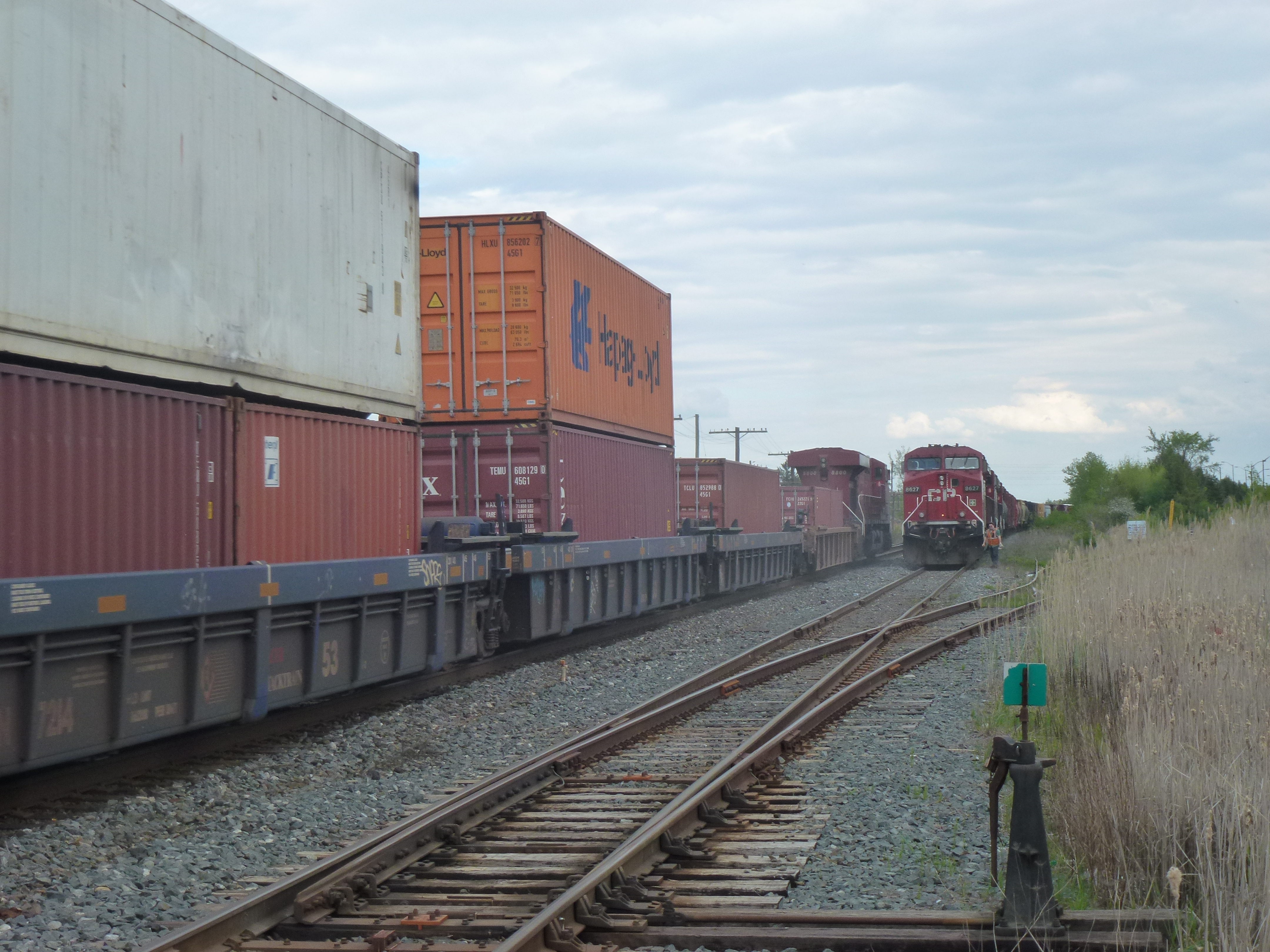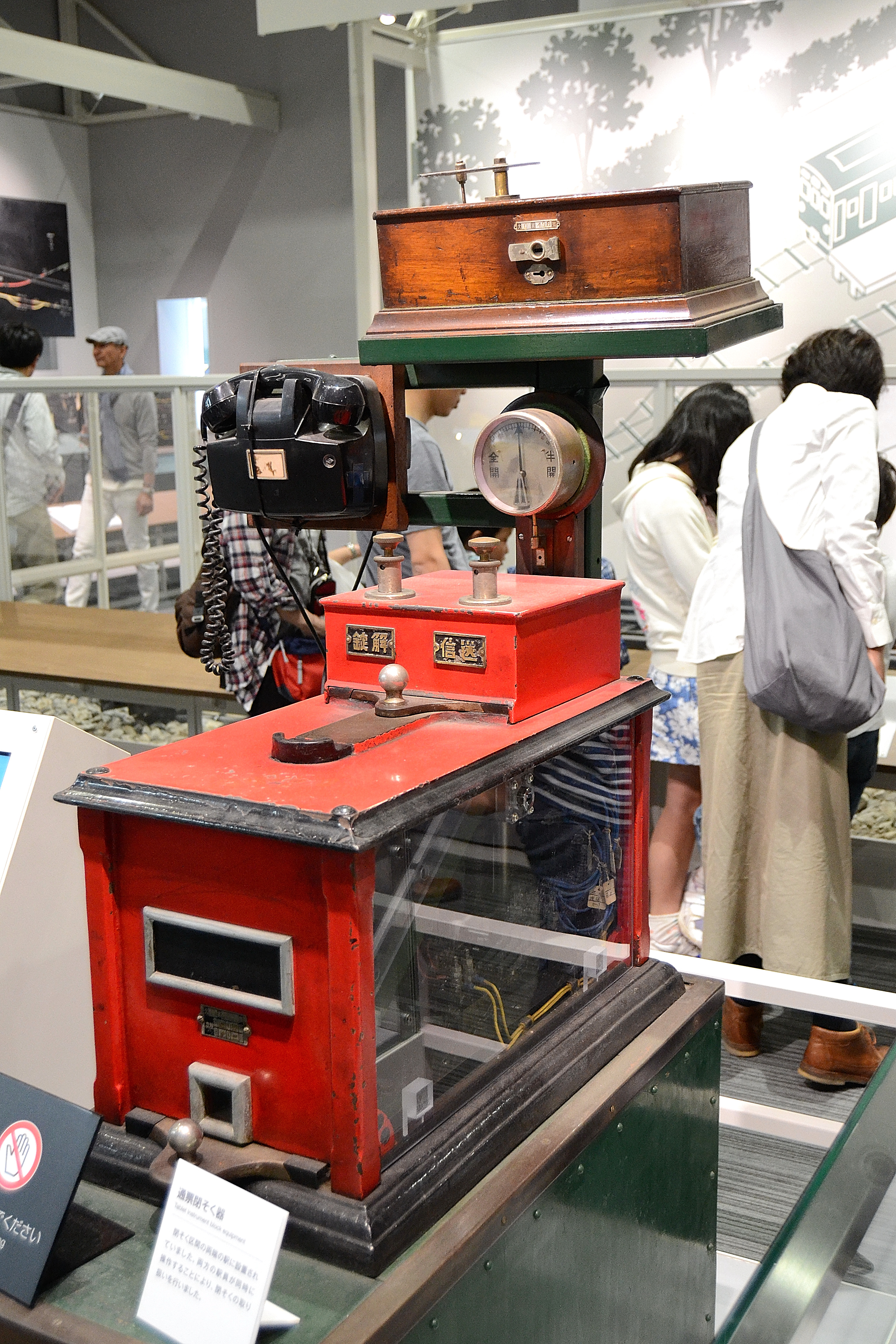|
Manakau Railway Station
Manakau railway station was a station at Manakau in Horowhenua District on the Wellington–Manawatu section of the North Island Main Trunk in the Manawatū-Whanganui region of New Zealand. The station was sometimes known as Manukau and officially changed to Manakau on 28 February 1900. It opened in 1886 and closed in 1982. A shed, a hut and a passing loop remain at the site of the station. History Fergus and Blair of Dunedin had the contract for building the Manakau to Ōtaki section. Manakau was opened as a flag station by the Wellington and Manawatu Railway Company on Monday 2 August 1886, when trains started to run between Longburn and Ōtaki. The first through train from Wellington to Palmerston North ran on 30 November 1886. In 1902 a new goods shed was built. When New Zealand Railways Department took over in 1908, tablet signalling was introduced. Further improvements were made in 1909, so that by 1911 there was a shelter shed, platform, cart approach, by goods ... [...More Info...] [...Related Items...] OR: [Wikipedia] [Google] [Baidu] |
North Island Main Trunk
The North Island Main Trunk (NIMT) is the main railway line in the North Island of New Zealand, connecting the capital city Wellington with the country's largest city, Auckland. The line is long, built to the New Zealand rail gauge of and serves the large cities of Palmerston North and Hamilton, New Zealand, Hamilton. Most of the NIMT is Single track (rail), single track with frequent passing loops, but sections at each end that also handle suburban commuter traffic are double tracked: * The section known as the North-South Junction between Wellington railway station, Wellington and Waikanae railway station, Waikanae, except for of single-track through tunnels between North Junction ( from Wellington) and South Junction, ( from Wellington), on the Pukerua Bay railway station, Pukerua Bay to Paekakariki railway station, Paekākāriki section, * between Hamilton and Te Kauwhata railway station, Te Kauwhata (except for the single-track Waikato River Bridge at Ngāruawāhia rai ... [...More Info...] [...Related Items...] OR: [Wikipedia] [Google] [Baidu] |
Rail Transport In Manawatū-Whanganui
Rail or rails may refer to: Rail transport *Rail transport and related matters *Railway track or railway lines, the running surface of a railway Arts and media Film * ''Rails'' (film), a 1929 Italian film by Mario Camerini * ''Rail'' (1967 film), a film by Geoffrey Jones for British Transport Films * ''Rail'' (2024 film), a Tamil-language film Magazines * ''Rail'' (magazine), a British rail transport periodical * ''Rails'' (magazine), a former New Zealand based rail transport periodical Other arts *The Rails, a British folk-rock band * Rail (theater) or batten, a pipe from which lighting, scenery, or curtains are hung Technology *Rails framework or Ruby on Rails, a web application framework *Rail system (firearms), a mounting system for firearm attachments *Front engine dragster *Runway alignment indicator lights, a configuration of an approach lighting system *Rule Augmented Interconnect Layout, a specification for expressing guidelines for printed circuit boards; companion ... [...More Info...] [...Related Items...] OR: [Wikipedia] [Google] [Baidu] |
Buildings And Structures In Manawatū-Whanganui
A building or edifice is an enclosed structure with a roof, walls and windows, usually standing permanently in one place, such as a house or factory. Buildings come in a variety of sizes, shapes, and functions, and have been adapted throughout history for numerous factors, from building materials available, to weather conditions, land prices, ground conditions, specific uses, prestige, and aesthetic reasons. To better understand the concept, see ''Nonbuilding structure'' for contrast. Buildings serve several societal needs – occupancy, primarily as shelter from weather, security, living space, privacy, to store belongings, and to comfortably live and work. A building as a shelter represents a physical separation of the human habitat (a place of comfort and safety) from the ''outside'' (a place that may be harsh and harmful at times). buildings have been objects or canvasses of much artistic expression. In recent years, interest in sustainable planning and building practi ... [...More Info...] [...Related Items...] OR: [Wikipedia] [Google] [Baidu] |
Defunct Railway Stations In New Zealand
{{Disambiguation ...
Defunct may refer to: * ''Defunct'' (video game), 2014 * Zombie process or defunct process, in Unix-like operating systems See also * * :Former entities * End-of-life product * Obsolescence Obsolescence is the process of becoming antiquated, out of date, old-fashioned, no longer in general use, or no longer useful, or the condition of being in such a state. When used in a biological sense, it means imperfect or rudimentary when comp ... [...More Info...] [...Related Items...] OR: [Wikipedia] [Google] [Baidu] |
Siding (rail)
In rail terminology, a siding is a low-speed track section distinct from a running line or through route such as a main line, branch line, or spur. It may connect to through track or to other sidings at either end. Sidings often have lighter rails, meant for lower speed or less heavy traffic, and few, if any, signals. Sidings connected at both ends to a running line are commonly known as loops; those not so connected may be referred to as single-ended or dead-end sidings, or (if short) stubs. Functions Sidings may be used for marshalling (classifying), stabling, storing, loading, and unloading rail vehicles. Common sidings store stationary rolling stock, especially for loading and unloading. Industrial sidings (also known as spurs) go to factories, mines, quarries, wharves, warehouses, some of them are essentially links to industrial railways. Such sidings can sometimes be found at stations for public use; in American usage these are referred to as team tracks (after ... [...More Info...] [...Related Items...] OR: [Wikipedia] [Google] [Baidu] |
State Highway 1 (New Zealand)
State Highway 1 (SH 1) is the longest and most significant road in the New Zealand road network, running the length of both main islands. It appears on road maps as SH 1 and on road signs as a white number 1 on a red shield, but it has the official designations SH 1N in the North Island, SH 1S in the South Island. SH 1 is long, in the North Island and in the South Island. Since 2010 new roads have reduced the length from . For the majority of its length it is a two-lane single carriageway, with at-grade intersections and property accesses, in both rural and urban areas. These sections have some passing lanes. Around of SH 1 is of motorway or expressway standard : in the North Island and in the South Island. Route North Island (SH 1N) SH 1 starts at Cape Reinga, at the northwestern tip of the Aupōuri Peninsula, and since April 2010 has been sealed (mainly with either chipseal or asphalt) for its entire length. From Waitiki Landing south of Cape Reinga, SH 1 t ... [...More Info...] [...Related Items...] OR: [Wikipedia] [Google] [Baidu] |
Railways Department's Housing Scheme
The Railways Department's Housing Scheme refers to a housing programme undertaken by the New Zealand Railways Department (also known as NZR or New Zealand Government Railways) during the 1920s. The scheme was intended to provide railway workers and their families with affordable and accessible accommodation during a time when it was otherwise difficult to find suitable housing. Although the houses were generally only intended as section houses, specifically for workers of the Railways Department, some houses were provided for the general population - such as those in Lower Hutt. The construction scheme was in effect between 1923 and 1929 and saw the construction of over 1,500 prefabricated houses throughout New Zealand. History Background NZR had provided housing of some sort for its workforce since the 1880s. These were often huts for the workers and small cottages for higher-ranking officials such as station masters. Privately operated railways New Zealand Midland Ra ... [...More Info...] [...Related Items...] OR: [Wikipedia] [Google] [Baidu] |
Passing Loop
A passing loop (UK usage) or passing siding (North America) (also called a crossing loop, crossing place, refuge loop or, colloquially, a hole) is a place on a single line railway or tramway, often located at or near a station, where trains or trams travelling in opposite directions can pass each other. Trains/trams going in the same direction can also overtake, provided that the signalling arrangement allows it. A passing loop is double-ended and connected to the main track at both ends, though a dead end siding known as a refuge siding, which is much less convenient, can be used. A similar arrangement is used on the gauntlet track of cable railways and funiculars, and in passing places on single-track roads. Ideally, the loop should be longer than all trains needing to cross at that point. Unless the loop is of sufficient length to be dynamic, the first train to arrive must stop or move very slowly, while the second to arrive may pass at speed. If one train is too lo ... [...More Info...] [...Related Items...] OR: [Wikipedia] [Google] [Baidu] |
Tyer's Electric Train Tablet
Tyer's Electric Train Tablet system is a form of railway signalling for Single track (rail), single line railways used in several countries; it was first devised in Great Britain by engineer Edward Tyer after the Thorpe rail accident of 1874, which left 21 people dead. It was used in New Zealand for close to 100 years until June 1994. The system used a hard disk called a ''tablet'', a form of Token (railway signalling), token. The purpose of the system was to use the tablet as a physical guarantee to the traincrew that their train had exclusive right of way on the single-line section. Without it, they could not proceed beyond the section signal which protected entry to the next section of the single line. With advances in electrical locking of the lever frame within the signal box, the tablet instrument also electrically locked the section signal lever. That was marked with a white stripe on the red background. Construction An instrument was placed at each end of the single- ... [...More Info...] [...Related Items...] OR: [Wikipedia] [Google] [Baidu] |
New Zealand Railways Department
The New Zealand Railways Department, NZR or NZGR (New Zealand Government Railways) and often known as the "Railways", was a government department charged with owning and maintaining Rail transport in New Zealand, New Zealand's railway infrastructure and operating the railway system. The Department was created in 1880 and was corporatised on 1 April 1982 into the New Zealand Railways Corporation. Originally, railway construction and operation took place under the auspices of the former Provinces of New Zealand, provincial governments and some private railways, before all of the provincial operations came under the central New Zealand Ministry of Works, Public Works Department. The role of operating the rail network was subsequently separated from that of the network's construction. From 1895 to 1993 there was a responsible Minister, the Minister of Railways (New Zealand), Minister of Railways. He was often also the Minister of Public Works. Apart from four brief experiments with i ... [...More Info...] [...Related Items...] OR: [Wikipedia] [Google] [Baidu] |
Palmerston North Central Railway Station
Palmerston North Central railway station was a station on the North Island Main Trunk in New Zealand and the Palmerston North–Gisborne Line. The station opened in 1876 and closed in 1963. History The original station was opened on 20 October 1876, when the Foxton Tramway was reopened as the Foxton Branch, though from 25 July 1873 the Square had been the terminus for the tramway. In 1883 the Wellington–Manawatu Line south to Wellington opened, increasing traffic. The line was constructed from Wellington to Longburn by the private Wellington and Manawatu Railway Company (W&MR), and initially trains terminated at Longburn, forcing passengers to change trains to NZR services to Palmerston North. Eventually, NZR and W&MR finalised an interchange agreement, allowing W&MR passenger and mail trains to terminate at Palmerston North Central station. A special dock platform at the south of the station was constructed for W&MR trains to Wellington. Traffic increased with the openin ... [...More Info...] [...Related Items...] OR: [Wikipedia] [Google] [Baidu] |






